-
 Bitcoin
Bitcoin $106,754.6083
1.33% -
 Ethereum
Ethereum $2,625.8249
3.80% -
 Tether USDt
Tether USDt $1.0001
-0.03% -
 XRP
XRP $2.1891
1.67% -
 BNB
BNB $654.5220
0.66% -
 Solana
Solana $156.9428
7.28% -
 USDC
USDC $0.9998
0.00% -
 Dogecoin
Dogecoin $0.1780
1.14% -
 TRON
TRON $0.2706
-0.16% -
 Cardano
Cardano $0.6470
2.77% -
 Hyperliquid
Hyperliquid $44.6467
10.24% -
 Sui
Sui $3.1128
3.86% -
 Bitcoin Cash
Bitcoin Cash $455.7646
3.00% -
 Chainlink
Chainlink $13.6858
4.08% -
 UNUS SED LEO
UNUS SED LEO $9.2682
0.21% -
 Avalanche
Avalanche $19.7433
3.79% -
 Stellar
Stellar $0.2616
1.64% -
 Toncoin
Toncoin $3.0222
2.19% -
 Shiba Inu
Shiba Inu $0.0...01220
1.49% -
 Hedera
Hedera $0.1580
2.75% -
 Litecoin
Litecoin $87.4964
2.29% -
 Polkadot
Polkadot $3.8958
3.05% -
 Ethena USDe
Ethena USDe $1.0000
-0.04% -
 Monero
Monero $317.2263
0.26% -
 Bitget Token
Bitget Token $4.5985
1.68% -
 Dai
Dai $0.9999
0.00% -
 Pepe
Pepe $0.0...01140
2.44% -
 Uniswap
Uniswap $7.6065
5.29% -
 Pi
Pi $0.6042
-2.00% -
 Aave
Aave $289.6343
6.02%
What does the high volume stagnation mean? Is the main force shipping?
High volume stagnation in crypto means high trading but stable prices; it may indicate main force shipping, balanced by equal buying.
Jun 10, 2025 at 11:01 pm
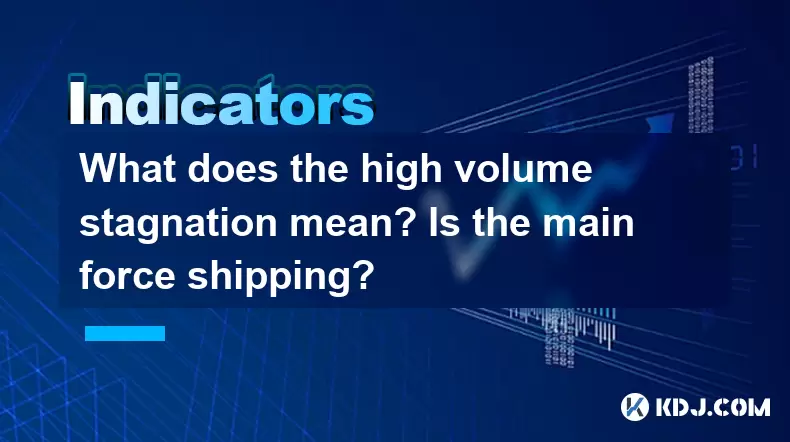
What does the high volume stagnation mean? Is the main force shipping?
In the world of cryptocurrencies, understanding market dynamics is crucial for making informed trading decisions. One phenomenon that traders often encounter is high volume stagnation. This article delves into what high volume stagnation means, whether it indicates that the main force is shipping, and how traders can interpret and react to these market conditions.
Understanding High Volume Stagnation
High volume stagnation refers to a situation in the cryptocurrency market where trading volumes are significantly high, but the price of the asset remains relatively unchanged. This can be a perplexing scenario for traders because high trading volumes typically suggest strong interest and activity in the market, which should ideally lead to price movements.
When the market experiences high volume stagnation, it indicates that there is a lot of buying and selling happening, but the forces of supply and demand are balancing each other out. This balance prevents the price from moving significantly in either direction. Traders need to understand that this phenomenon can be influenced by various factors, including market sentiment, liquidity, and the actions of large investors or "main forces."
Is the Main Force Shipping?
The term "main force" in the context of cryptocurrency trading often refers to large institutional investors or whales who have the capacity to influence market prices through their trading activities. The question of whether the main force is shipping during periods of high volume stagnation is a common concern among traders.
Shipping in trading terminology means that large investors are selling their holdings, often in large volumes, which can lead to a decrease in the asset's price. During high volume stagnation, it is possible that the main force is indeed shipping, but the impact of their selling is being offset by an equal amount of buying from other market participants.
To determine if the main force is shipping, traders can look at several indicators:
- Order Book Depth: Analyzing the order book can reveal whether there are large sell orders that could indicate shipping by the main force.
- Volume Profile: A volume profile can show where the majority of trading volume is occurring, which might indicate whether large investors are selling at certain price levels.
- On-Chain Data: Examining on-chain metrics such as large transaction volumes can provide insights into the activities of major investors.
Interpreting High Volume Stagnation
Interpreting high volume stagnation requires a nuanced understanding of market dynamics. It is important for traders to look beyond the surface-level data and consider various factors that could be contributing to the observed market conditions.
- Market Sentiment: High volume stagnation can be influenced by the overall sentiment of the market. If investors are uncertain about the future direction of the asset, they might engage in high volumes of trading without a clear consensus on price movement.
- Liquidity: High liquidity can lead to high volume stagnation if there is a large number of market participants trading small amounts, which balances out the overall price movement.
- Market Manipulation: In some cases, high volume stagnation could be a result of market manipulation by large investors who are trying to create a false sense of stability to execute their trading strategies.
Trading Strategies During High Volume Stagnation
When faced with high volume stagnation, traders need to adapt their strategies to navigate the market effectively. Here are some approaches that traders can consider:
- Range Trading: Since the price is not moving significantly, traders can engage in range trading by buying at the lower end of the range and selling at the higher end.
- Breakout Trading: Traders can prepare for potential breakouts by setting up buy or sell orders at key resistance or support levels. A breakout from the stagnation could lead to significant price movements.
- Scalping: Given the high volume, traders can engage in scalping, which involves making small profits from numerous trades throughout the day.
Technical Analysis Tools for High Volume Stagnation
Utilizing technical analysis tools can help traders gain a better understanding of high volume stagnation and make more informed trading decisions. Here are some tools that traders can use:
- Volume Indicators: Tools like the Volume Weighted Average Price (VWAP) and the On-Balance Volume (OBV) can provide insights into the relationship between volume and price movements.
- Moving Averages: Using moving averages can help traders identify trends and potential breakouts from the stagnation period.
- Candlestick Patterns: Analyzing candlestick patterns can reveal potential shifts in market sentiment and help traders anticipate price movements.
Practical Steps to Analyze High Volume Stagnation
To effectively analyze high volume stagnation, traders can follow these practical steps:
- Monitor Trading Volumes: Keep a close eye on the trading volumes of the asset in question. High volumes can indicate significant market activity, even if the price is not moving.
- Analyze Order Books: Regularly review the order book to understand the depth of buy and sell orders. This can provide clues about the intentions of large investors.
- Use On-Chain Analytics: Leverage on-chain analytics tools to track large transactions and movements of funds, which can indicate whether the main force is shipping or not.
- Set Up Alerts: Configure price and volume alerts to stay informed about potential breakouts or shifts in market conditions.
- Backtest Strategies: Use historical data to backtest trading strategies that can be effective during periods of high volume stagnation.
Frequently Asked Questions
1. Can high volume stagnation last for a long time?
High volume stagnation can persist for varying durations depending on the underlying market conditions. It can last for days, weeks, or even months if the forces of supply and demand remain balanced.
2. How can I differentiate between high volume stagnation and a consolidation phase?
High volume stagnation typically involves high trading volumes with little price movement, while consolidation phases can occur with varying volumes. Consolidation often precedes a significant price move, whereas high volume stagnation may continue without a clear breakout.
3. Are there specific cryptocurrencies more prone to high volume stagnation?
While high volume stagnation can occur in any cryptocurrency, it is more commonly observed in highly liquid assets with significant institutional interest, such as Bitcoin and Ethereum.
4. What role does market manipulation play in high volume stagnation?
Market manipulation can contribute to high volume stagnation by creating artificial stability in the market. Large investors may engage in high-volume trading to mask their true intentions and execute their strategies without causing immediate price movements.
Disclaimer:info@kdj.com
The information provided is not trading advice. kdj.com does not assume any responsibility for any investments made based on the information provided in this article. Cryptocurrencies are highly volatile and it is highly recommended that you invest with caution after thorough research!
If you believe that the content used on this website infringes your copyright, please contact us immediately (info@kdj.com) and we will delete it promptly.
- 2025-W Uncirculated American Gold Eagle and Dr. Vera Rubin Quarter Mark New Products
- 2025-06-13 06:25:13
- Ruvi AI (RVU) Leverages Blockchain and Artificial Intelligence to Disrupt Marketing, Entertainment, and Finance
- 2025-06-13 07:05:12
- H100 Group AB Raises 101 Million SEK (Approximately $10.6 Million) to Bolster Bitcoin Reserves
- 2025-06-13 06:25:13
- Galaxy Digital CEO Mike Novogratz Says Bitcoin Will Replace Gold and Go to $1,000,000
- 2025-06-13 06:45:13
- Trust Wallet Token (TWT) Price Drops 5.7% as RWA Integration Plans Ignite Excitement
- 2025-06-13 06:45:13
- Ethereum (ETH) Is in the Second Phase of a Three-Stage Market Cycle
- 2025-06-13 07:25:13
Related knowledge

How to confirm the effectiveness of the average price line support in the time-sharing chart?
Jun 17,2025 at 12:56am
Understanding the Time-Sharing Chart and Its RelevanceIn cryptocurrency trading, time-sharing charts play a crucial role in analyzing short-term price movements. These charts typically display price fluctuations over a specific period, often ranging from minutes to hours. Traders rely on them to make quick decisions based on real-time data. The average ...

What does it mean when the momentum indicator breaks above the zero axis?
Jun 17,2025 at 12:43am
Understanding the Momentum IndicatorThe momentum indicator is a technical analysis tool used to measure the speed or velocity of price movements in cryptocurrency markets. It helps traders identify potential trend reversals, overbought or oversold conditions, and confirms existing trends. The indicator typically oscillates around a zero line, with value...
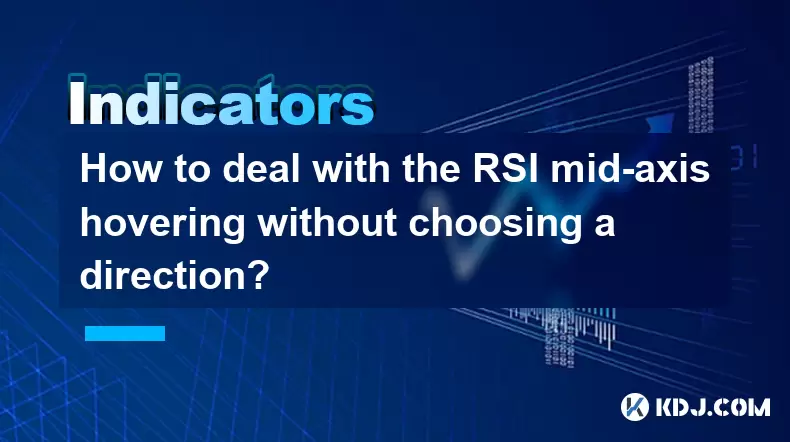
How to deal with the RSI mid-axis hovering without choosing a direction?
Jun 17,2025 at 02:02am
Understanding RSI Mid-Axis Hovering in Cryptocurrency TradingThe Relative Strength Index (RSI) is a popular momentum oscillator used by traders to assess whether an asset is overbought or oversold. In cryptocurrency markets, it's common for the RSI to hover around its mid-axis, typically at the 50 level, without showing a clear upward or downward trend....
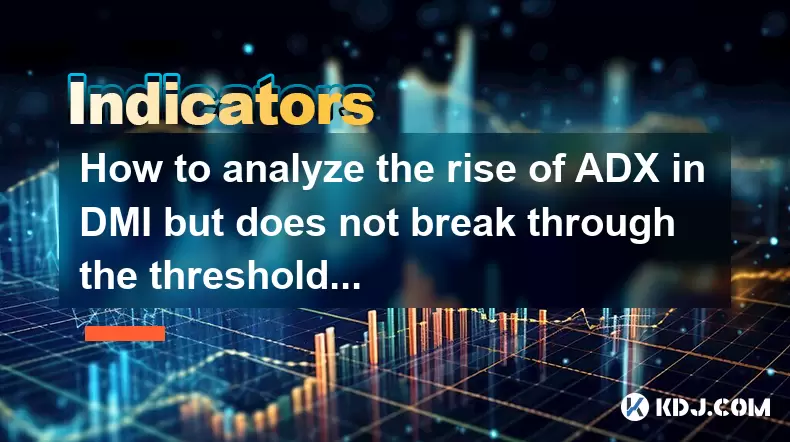
How to analyze the rise of ADX in DMI but does not break through the threshold?
Jun 16,2025 at 11:49pm
Understanding ADX and DMI in Cryptocurrency TradingIn cryptocurrency trading, ADX (Average Directional Index) is a technical indicator used to measure the strength of a trend. It works in conjunction with the DMI (Directional Movement Indicator), which includes two components: +DI (Positive Directional Indicator) and -DI (Negative Directional Indicator)...
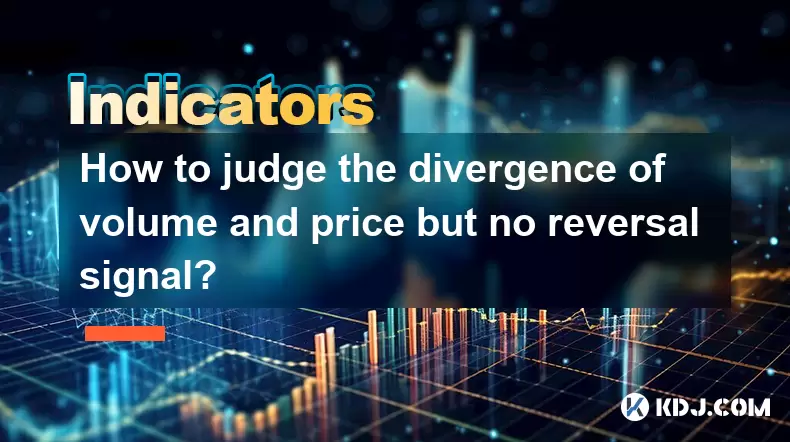
How to judge the divergence of volume and price but no reversal signal?
Jun 17,2025 at 12:28am
Understanding Volume and Price DivergenceIn the world of cryptocurrency trading, volume and price are two key indicators that traders monitor closely. Divergence occurs when these two metrics move in opposite directions. For example, if the price of a cryptocurrency is rising but its volume is declining, this could signal weakening momentum. However, it...
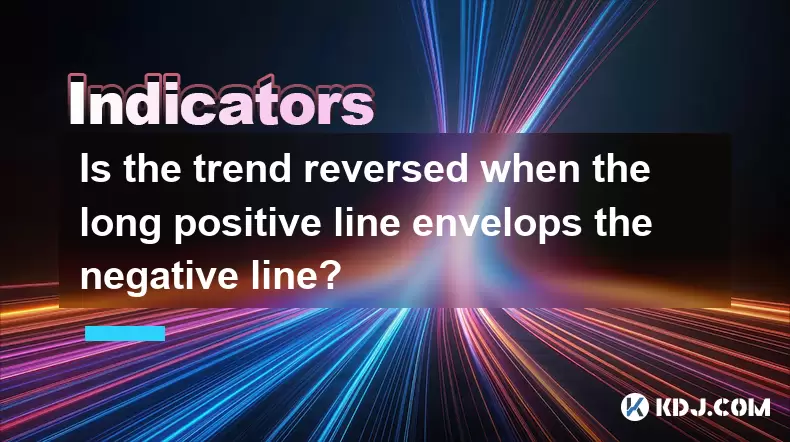
Is the trend reversed when the long positive line envelops the negative line?
Jun 17,2025 at 03:28am
Understanding the Envelope Pattern in Candlestick ChartsIn candlestick charting, one of the most widely recognized reversal patterns is the 'enveloping pattern.' This pattern typically appears at the end of a trend and signals a potential reversal. When a long positive (bullish) candle completely engulfs the previous negative (bearish) candle, it can in...

How to confirm the effectiveness of the average price line support in the time-sharing chart?
Jun 17,2025 at 12:56am
Understanding the Time-Sharing Chart and Its RelevanceIn cryptocurrency trading, time-sharing charts play a crucial role in analyzing short-term price movements. These charts typically display price fluctuations over a specific period, often ranging from minutes to hours. Traders rely on them to make quick decisions based on real-time data. The average ...

What does it mean when the momentum indicator breaks above the zero axis?
Jun 17,2025 at 12:43am
Understanding the Momentum IndicatorThe momentum indicator is a technical analysis tool used to measure the speed or velocity of price movements in cryptocurrency markets. It helps traders identify potential trend reversals, overbought or oversold conditions, and confirms existing trends. The indicator typically oscillates around a zero line, with value...

How to deal with the RSI mid-axis hovering without choosing a direction?
Jun 17,2025 at 02:02am
Understanding RSI Mid-Axis Hovering in Cryptocurrency TradingThe Relative Strength Index (RSI) is a popular momentum oscillator used by traders to assess whether an asset is overbought or oversold. In cryptocurrency markets, it's common for the RSI to hover around its mid-axis, typically at the 50 level, without showing a clear upward or downward trend....

How to analyze the rise of ADX in DMI but does not break through the threshold?
Jun 16,2025 at 11:49pm
Understanding ADX and DMI in Cryptocurrency TradingIn cryptocurrency trading, ADX (Average Directional Index) is a technical indicator used to measure the strength of a trend. It works in conjunction with the DMI (Directional Movement Indicator), which includes two components: +DI (Positive Directional Indicator) and -DI (Negative Directional Indicator)...

How to judge the divergence of volume and price but no reversal signal?
Jun 17,2025 at 12:28am
Understanding Volume and Price DivergenceIn the world of cryptocurrency trading, volume and price are two key indicators that traders monitor closely. Divergence occurs when these two metrics move in opposite directions. For example, if the price of a cryptocurrency is rising but its volume is declining, this could signal weakening momentum. However, it...

Is the trend reversed when the long positive line envelops the negative line?
Jun 17,2025 at 03:28am
Understanding the Envelope Pattern in Candlestick ChartsIn candlestick charting, one of the most widely recognized reversal patterns is the 'enveloping pattern.' This pattern typically appears at the end of a trend and signals a potential reversal. When a long positive (bullish) candle completely engulfs the previous negative (bearish) candle, it can in...
See all articles

























































































